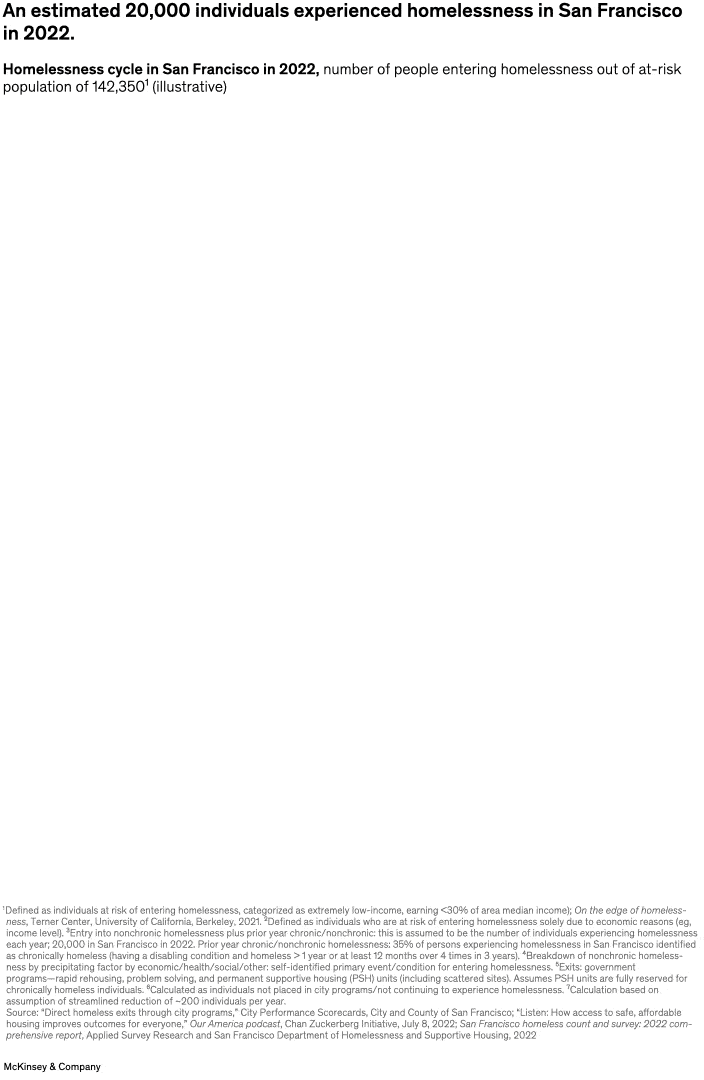Homeless experiences vary, but a cycle can start to develop for many individuals, write senior partners Alexis Krivkovich and Robert Schiff and coauthors. In the Bay Area, for example, the 20,000 people who experienced homelessness in 2022 might have found themselves entering, exiting, and reentering a complex maze of shelters, services, and programs that vary not only in size, scope, and approach but also in effectiveness. Three strategies to help alleviate for the ongoing homelessness crisis include bolstering housing affordability and income security, improving coordination among agencies in the response system, and investing in intensive care pathways.

Image description:
A flow diagram shows the factors causing an estimated 20,000 individuals to experience homelessness in San Francisco in 2022. That total is divided into flows to represent the number affected by each factor: 7,650 from economic factors, 4,650 from health factors, 4,150 from social factors, and 900 from other factors. There’s a separate flow for those who were chronically homeless in the prior year. These flows are then divided again to show the end states of these individuals, with around 581 rapidly rehoused, 260 diverted from homelessness altogether, 9,851 precariously housed, 1,708 moved into permanent supportive housing, 150 either dying or migrating, and 4,900 and 2,550 remaining nonchronically and chronically homeless, respectively. Those who were precariously housed or nonchronically or chronically homeless filter back into the cycle.
Source: “Direct homeless exits through city programs,” City Performance Scorecards, City and County of San Francisco; “Listen: How access to safe, affordable housing improves outcomes for everyone,” Our America podcast, Chan Zuckerberg Initiative, July 8, 2022; San Francisco homeless count and survey: 2022 comprehensive report, Applied Survey Research and San Francisco Department of Homelessness and Supportive Housing, 2022.
End of image description.
To read the article, see “The ongoing crisis of homelessness in the Bay Area: What’s working, what’s not,” March 23, 2023.